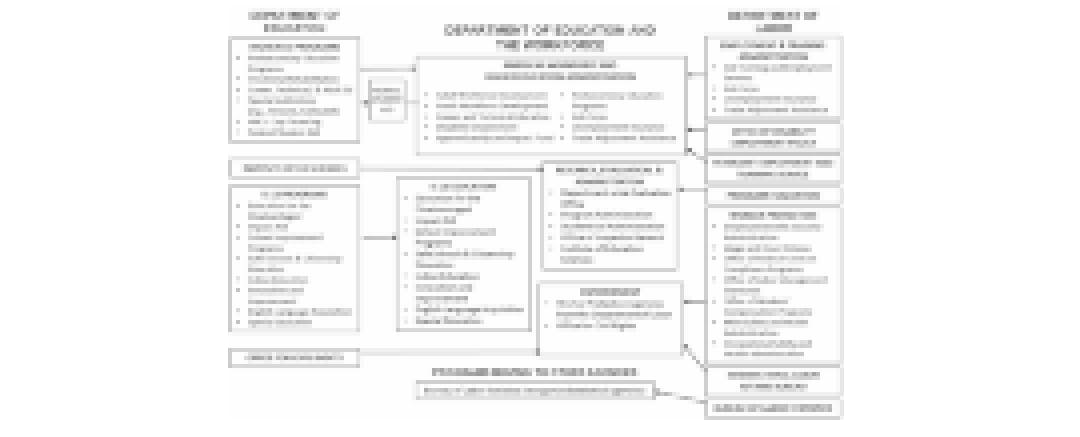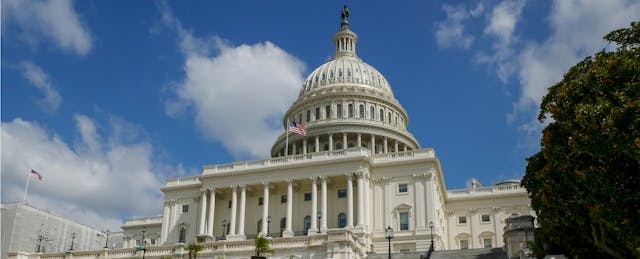The Trump Administration on Thursday announced a proposal to overhaul the organizational structure of federal departments. Among the ideas: merge the Department of Education with the Department of Labor to form a single Cabinet agency, which is being called the Department of Education and the Workforce.
Notably, the blueprint leaves out any mention of the Office of Educational Technology (OET), the branch of the Department of Education that oversees federal policies and initiatives relating to education technology.
This omission leaves former Office of Educational Technology officials uneasy. Joseph South, former director for the office (and now the chief learning officer at International Society for Technology in Education, or ISTE), says he would be disappointed if the office wasn’t accounted for.
“I’m concerned that the Office of Educational Technology doesn’t appear in the plan that was released. We don’t know exactly what that means. The fact that it isn’t included is definitely a cause for concern,” explains South.
“OET was established by Congress specifically, and it was set up in such a way that the director of the Office would advise the [education] secretary,” South contines. “That was done intentionally to make sure that educational technology was considered a key component of our nation’s children’s education.”
The reorganization plan is not the first time the current administration has ignored the Office of Educational Technology in major proposals. In 2017, President Trump’s budget proposal did not allocate funds to the office. The only mention came in the form of a slight restructure to the chain of command, moving the Office of Educational Technology under the authority of the Deputy Secretary. It was previously under the Secretary of Education.

South notes that the office has advised several education secretaries and undersecretaries, including Arne Duncan to John King. This advisement birthed several tech-friendly programs still used in many K-12 and higher-education institutions today.
“We advised on the EQUIP program,” South says, referring to OET’s pilot program involving partnerships between eight higher-ed institutions and non-traditional providers. “This was an experimental program that was coming out of the office of Undersecretary and we were heavily involved in helping to shape that program,” He adds: “There are so many things that come before the secretary that have a technology aspect to them. If the secretary doesn’t take [the OET’s council] into account, they can’t make as good or as impactful decisions.”
In order for the Office of Educational Technology to be officially abolished, Congress would have to dissolve it through legislation. But that doesn’t mean the staff cannot be dramatically reduced or reorganized. Bipartisan congressional support would also be needed in order for the latest proposal to move forward.
In the Name of Efficiency
For the Trump administration, the stated goal of this reorganization is efficiency. But moving a 3,900-employee education department into a staff of 15,000 at the Department of Labor appears to rebuff conventional ideas surrounding the goal. Many people assume smaller organizations have less bureaucracy and can be more agile, so a merger in the name of efficiency may seem counterintuitive.
But Gerard Robinson, executive director of the Center for Advancing Opportunity, a nonpartisan education and research initiative, says the efficiency of this merger can be looked at through multiple lenses.
Typically, Robinson notes, smaller departments lose power and autonomy when they are absorbed into others with more staff and resources. And he recalls that when the Department of Education was a part of other federal agencies, officials were dissatisfied with the attention paid to educational issues.
This is a concerning possibility if Trump’s proposal were to pass, Robinson acknowledges. But he is in favor of having a dialogue about what such a the merger would actually look like, noting that historically the Department of Education has appeared overwhelmed with the big tasks they have taken on, like managing student debt. He also says that adding staff while dividing the workload could bring about the efficiency the Trump administration hopes for.
The 3,900-staff at the education department could “have additional support to work on education, vocational education, technical education, higher education and financing in ways they never have before,” explains Robinson. “And now the 15,000-person labor department has 3,900 experts who could really think about what it takes to educate adults. I think of this as education across life. That is the entrepreneurial approach.”
Also optimistic about the merge is Paul Freedman, CEO and co-founder of Entangled Group, an education venture firm. “For an administration that usually comes up with dumb things, it's not the dumbest thing they are thinking about. Lifelong learning is important, so creating a ‘Department of Talent’ or something that streamlines the intersection of higher ed and labor, there is some sense to that.”
Freedman added however that he has little faith that the restructure will pass Congress, calling the proposal “dead on arrival.”
Joseph South is more skeptical but notes that while he was at the Department of Education his office worked closely with the Department of Labor. He sees promising opportunities for more collaboration between the two agencies.
“When I was at the department, we worked closely with the Department of Labor on several key initiatives,” says South, referencing his work on the U.S. Department of Labor’s Trade Adjustment Assistance Community College and Career Training (TAACCCT) grant program, which provides funds to community colleges. “I would much rather see an Office of EdTech retained and fully staffed at the Department of Education and have a sister office at Labor started.”


